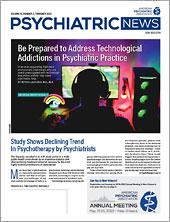More research is necessary to understand the extent and nuances of youth mental health disparities, but not necessarily more of the same research, concluded experts at the 2021 Youth Mental Health Disparities Conference. The conference was organized by the National Institute of Mental Health (NIMH), the Eunice Kennedy Shriver National Institute of Child Health and Human Development, and the National Institute on Minority Health and Health Disparities. It was held in response to the Congressional House Committee on Appropriations, which called for “a conference of leading extramural experts on health disparities … to discuss research opportunities and gaps, as well as evidence-based solutions and therapeutic interventions,” according to NIMH’s website.
The two-day conference emphasized several key points, including that research should more often involve community members, particularly children, adolescents, and their families. Further, research needs to investigate and address root causes of mental health disparities, including structural racism, and not focus exclusively on individuals.
Presenters shared some of the research they are conducting around risk, identification, interventions, and follow-up care. Andrea Spencer, M.D., discussed the work that she and her colleagues have done related to attention-deficit/hyperactivity disorder (ADHD) and treatment disparities. Spencer is a child and adolescent psychiatrist at Boston Medical Center, as well as director of Pediatric Integrated Behavioral Health and an assistant professor of psychiatry at the Boston University School of Medicine. She is also the director of the Revolutionizing Equal Access to Care and Health for ADHD (REACH) program, which investigates barriers and stigmas that minority families face when seeking care for their children with ADHD. Through their work, Spencer and her colleagues have found that the discrimination parents often face delays their children’s ADHD treatment.
Spencer pointed out that Black children aged 5 to 11 years old are twice as likely as their White peers to die from suicide, and ADHD is the most common psychiatric disorder associated with these suicides. “We hypothesize, based on our qualitative data, that the combination of ADHD stigma and racism experienced by Black families is actually leading to treatment delays and increasing distress for these families, and therefore increasing the risk of suicidality and suicide attempts,” she said.
She and her colleagues are conducting a case control study to determine the relationship between discrimination and suicidality among Black school-age children with ADHD and to identify the contribution of a missed ADHD diagnosis.
During the conference, the conversation also veered into contextual factors and other drivers of health outcomes for youth, such as poverty and food and housing insecurity, which may fall outside the traditional scope of mental health research. Matthew Morton, Ph.D., a research fellow at Chapin Hall at the University of Chicago, shared his research on homelessness among youth during the pandemic. He and his colleagues have found that symptoms of anxiety and depression are significantly associated with young people’s experiences of housing insecurity.
“Longitudinal research makes a compelling case that housing and food insecurity contributes to later mental health problems,” Morton said.
Bonnie Nagel, Ph.D., emphasized the importance of inclusive, equitable, and unbiased research. She is a professor of psychiatry and behavioral neuroscience at Oregon Health & Science University, as well as a principal investigator on the federally funded Adolescent Brain Cognitive Development Study (ABCD). Over the past year, she has chaired the ABCD study’s Justice, Equity, Diversity, and Inclusion Task Force, which has a stated mission of effecting change that promotes equity and diversity within all levels of the study and in the ways the study’s data are used.
Nagel explained that researchers should carefully consider whether it is appropriate to control for race or ethnicity in their studies or to report findings in association with those variables. Given that race is a social construct, there are often more proximal variables, such as the discrimination or socioeconomic disadvantages that participants experience, that better explain race-based findings. Researchers should also avoid including race in their studies’ demographic tables unless there is something specific and important about disparities they are trying to say, she said.
While summarizing the key takeaways of the conference, Lauren Hill, Ph.D., acting director of the NIMH Office for Disparities Research and Workforce Diversity, emphasized that while a great deal of important work around youth mental health disparities is ongoing, there is more work to be done. “It is clear that we have a lot more to learn,” Hill said. ■
More information on NIMH’s approach to conducting mental health disparities research is posted
here.
More information on REACH is posted
here.



